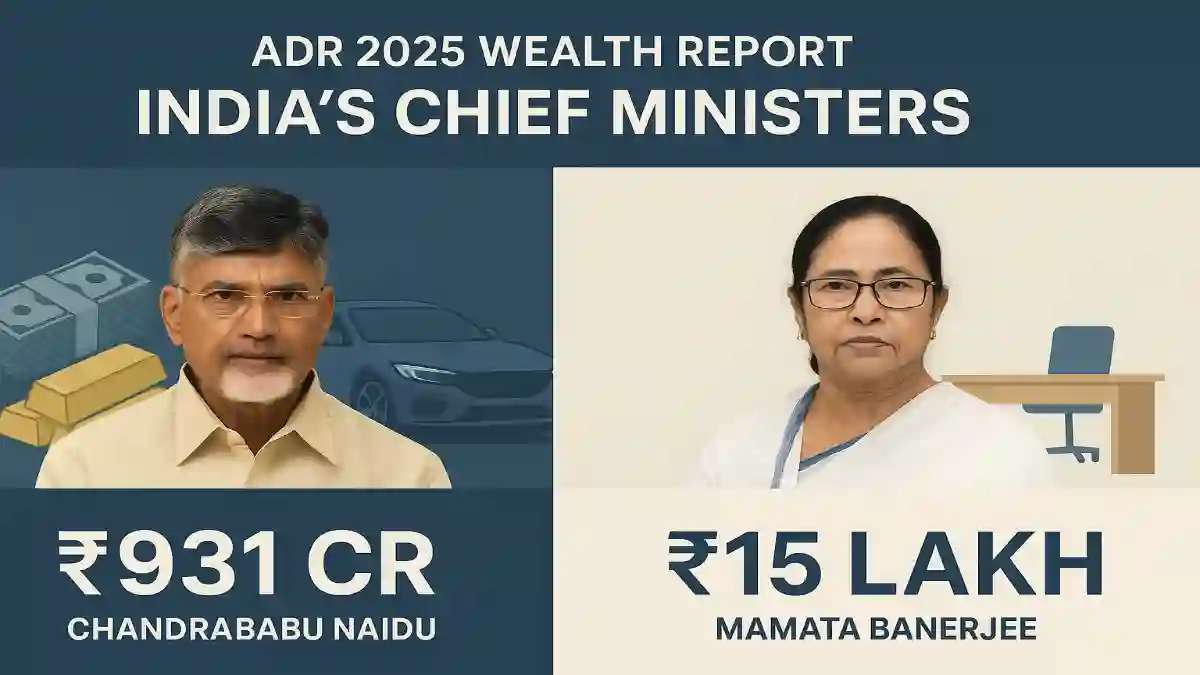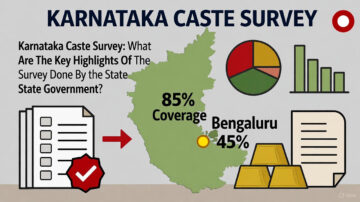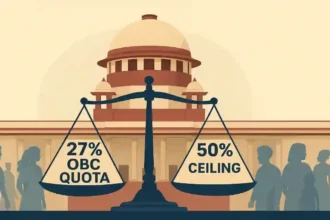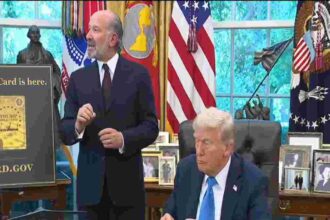The ADR 2025 Wealth Report has once again revealed the stark reality of wealth concentration among India’s political class. According to the data, 93% of India’s sitting Chief Ministers are crorepatis, highlighting a widening gap between those who govern and the common citizens they represent. The report not only sheds light on staggering personal fortunes but also exposes the growing nexus between political power, unchecked wealth, and criminal cases.

Chandrababu Naidu – The Crorepati CM in the Spotlight
Leading the pack is Andhra Pradesh Chief Minister Chandrababu Naidu, with declared assets worth an astonishing ₹931 crore. This makes him the richest CM in India, far ahead of his peers. However, Naidu’s wealth comes under a cloud of suspicion. The Skill Development Scam, in which he is already facing probes, has raised critical questions about the origins of his assets.
The ADR 2025 Wealth Report does not just reflect numbers it highlights how governance is increasingly becoming intertwined with allegations of corruption, misuse of public funds, and questionable dealings.
Top 5 Wealthiest CMs – Wealth Meets Criminal Charges
A deeper look into the ADR 2025 Wealth Report paints a troubling picture. The Top 5 wealthiest Chief Ministers also face serious legal and criminal allegations:
1. Chandrababu Naidu (Andhra Pradesh – ₹931 CR) – Facing probes in the Skill Development Scam and other corruption cases.
2. Pema Khandu (Arunachal Pradesh – ₹332 CR) – Facing a rape allegation case and a CBI plea on disproportionate assets.
3. Siddaramaiah (Karnataka – ₹52 CR) – Linked to the MUDA land scam and surrounded by controversy over 43 pending cases.
4. Neiphiu Rio (Nagaland – ₹47 CR) – Under the scanner in an ED money laundering probe.
5. Mohan Yadav (Madhya Pradesh – ₹42 CR) – Accused in the constable exam scam, raising concerns about fairness in recruitment.
This pattern is alarming. The richest leaders, who should ideally be setting the highest ethical standards, are embroiled in scams, criminal probes, and allegations of corruption.
The Other End of the Spectrum – Poorest CMs
In sharp contrast, West Bengal Chief Minister Mamata Banerjee has declared assets worth only ₹15 lakh, making her the poorest CM in India. Similarly, leaders like Omar Abdullah (₹55 lakh), Pinarayi Vijayan (₹1.18 crore), and Bhajanlal Sharma (₹1.46 crore) reflect a much humbler financial profile.
The ADR 2025 Wealth Report thus creates a picture of two Indias within politics: one where leaders command wealth in hundreds of crores, and another where some leaders maintain modest assets. This contrast raises an important question does extreme wealth correlate with governance quality, or does it highlight systemic loopholes that benefit only a few?
Criminal Cases – A Pattern Too Strong to Ignore
The most disturbing trend revealed by the ADR 2025 Wealth Report is the overlap between wealth accumulation and criminal allegations. Critics argue that politics in India has increasingly become a lucrative profession, where power provides protection against accountability. The fact that almost every wealthy CM is under investigation or accused in major scams cannot be brushed aside as coincidence.
When governance is clouded by scams like skill development fraud, land scams, money laundering, and recruitment irregularities, the credibility of democracy itself comes under question.
Why This Matters – Governance vs Public Trust
The findings of the ADR 2025 Wealth Report have serious implications for public trust in democratic institutions. When leaders accumulate disproportionate wealth while facing ongoing investigations, citizens are left to wonder whether governance serves the people or the pockets of the powerful.
Moreover, the stark contrast between the poorest and the richest Chief Ministers highlights growing inequality within political leadership itself. If politics is seen primarily as a pathway to immense wealth, the integrity of public office risks being permanently eroded.
Opinion – A Call for Accountability
The ADR 2025 Wealth Report is more than just an annual disclosure it is a mirror reflecting the reality of Indian politics. Wealthy Chief Ministers facing serious criminal allegations suggest a dangerous normalization of corruption at the top levels of power.
Unless stricter asset verification, stronger anti-corruption laws, and independent oversight mechanisms are enforced, India risks perpetuating a cycle where the political elite live in unimaginable luxury while the ordinary citizen struggles with inflation, unemployment, and inequality.
The question that remains is simple: Can a democracy thrive when its richest leaders are also its most accused?
Politicians wealth is increasing and common people’s wealth is draining. Heavy taxes, inflation & deteriorating infrastructure. Today also one MLA from Karnataka is arrested in Corruption & in betting case by ED. Karnataka ED arrests Congress MLA KC Veerendra over illegal betting racket. Seized: 4 luxury cars, gold worth ₹6 Cr & cash/jewellery worth ₹12 Cr.
Conclusion
The ADR 2025 Wealth Report is both revealing and alarming. While it lists the richest and poorest Chief Ministers, its real message lies in the corrupting nexus of money, power, and politics. For India to strengthen its democracy, transparency and accountability must become the bedrock of governance.
Until then, the report serves as a grim reminder in Indian politics, wealth often walks hand in hand with allegations of crime.








